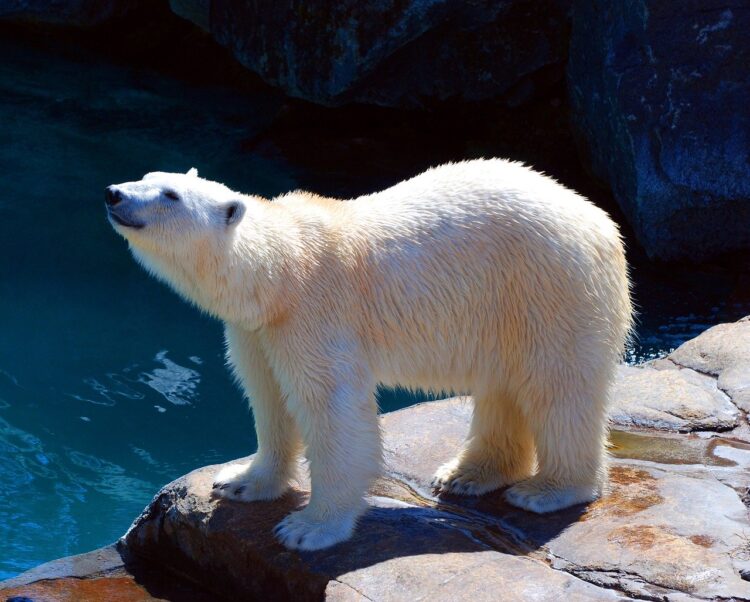ROYAL OAK, MI – The Detroit Zoological Society could “bearly” wait to welcome 19-year-old Anana to Michigan. The female polar bear, who arrived from the Cincinnati Zoo in late January, joins 15-year-old male Nuka and 7-year-old female Suka in the Arctic Ring of Life — one of North America’s largest polar bear habitats.
“Anana is exploring the tundra in the Arctic Ring of Life and very quickly acclimating to her new home here at the Detroit Zoo,” said Scott Carter, chief life sciences officer for the Detroit Zoological Society (DZS). “We’re very happy she’s here to join Nuka and Suka, and invite everyone to come welcome her on International Polar Bear Day.”
Anana arrived at the Detroit Zoo on a breeding recommendation from the Association of Zoos & Aquariums (AZA) Species Survival Program (SSP). SSPs are cooperative management plans to ensure genetically healthy, diverse and self-sustaining populations of threatened and endangered species in AZA-accredited zoos.
“Nuka and Anana appear curious and interested, which is a good sign,” said Carter. “We’re optimistic for future breeding and carefully watching how their relationship develops.”
Polar bear breeding season occurs in early spring, and after about an eight-month gestation period, typically one to two cubs are born.
Visitors can join the DZS in celebrating Nuka, Suka and newcomer Anana at the Detroit Zoo during International Polar Bear Day on Thursday, February 27. The event, which will highlight the conservation concerns facing this iconic species, will include zookeeper talks and educational activities from 11 a.m. to 3 p.m.
“Our hope is that the million-plus people who visit the Detroit Zoo each year leave here with a greater understanding of the issues facing polar bears in the wild and the knowledge that all of us can do something to help save these animals and their fragile arctic habitat,” said Carter.
The polar bears will receive special treats in their habitat at 11:30 a.m., 1:30 p.m. and 2:30 p.m. Animal care staff will share information about the personalities and behaviors of polar bears Nuka, Suka and Anana immediately following each feeding.
Education stations will include handheld microscopes that will provide an up-close look at the fur of a polar bear to show that it’s not actually white but rather translucent and hollow — the sun’s reflection off the bear’s dark skin gives the illusion of a white coat. “Blubber gloves” will demonstrate how blubber serves as insulation for these marine mammals, keeping them warm despite their icy climate. Children will also have the opportunity to compare themselves to a life-size polar bear cut-out in the Nunavut Gallery.
The Arctic Ring of Life encompasses more than 4 acres of outdoor and indoor spaces. The most unique feature is the spectacular 70-foot-long Frederick and Barbara Erb Polar Passage, a clear tunnel that winds through a vast underwater marine environment.








